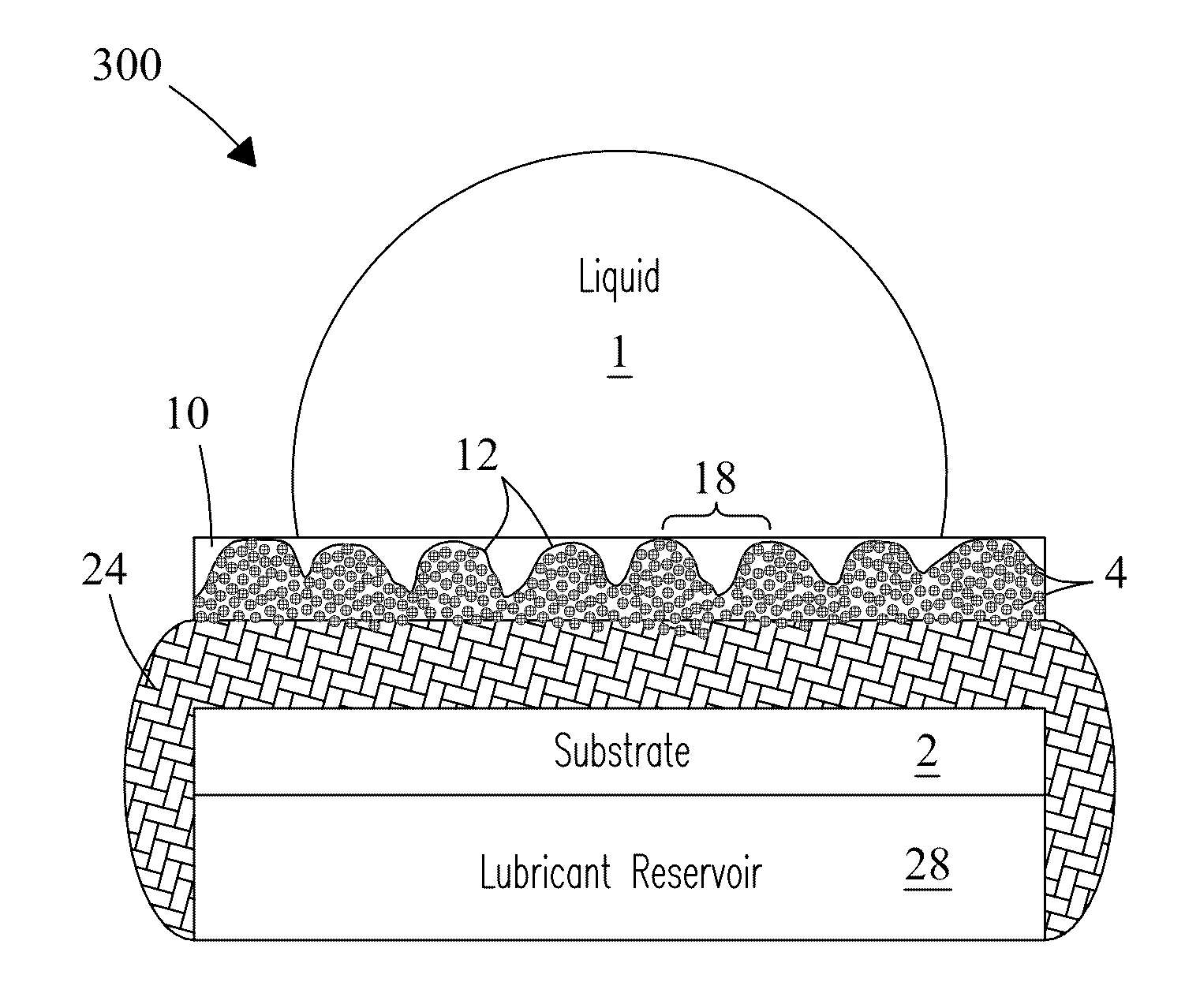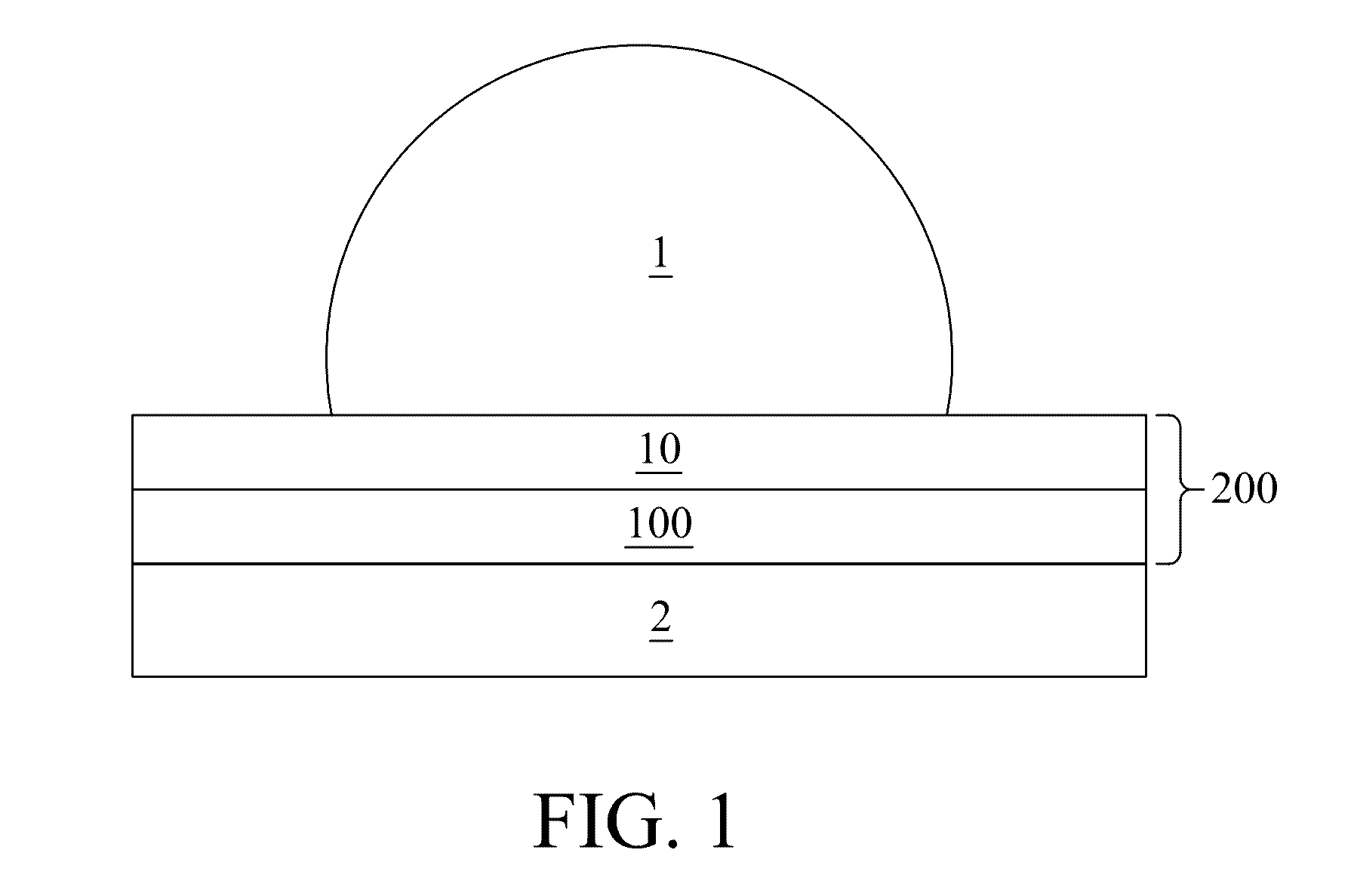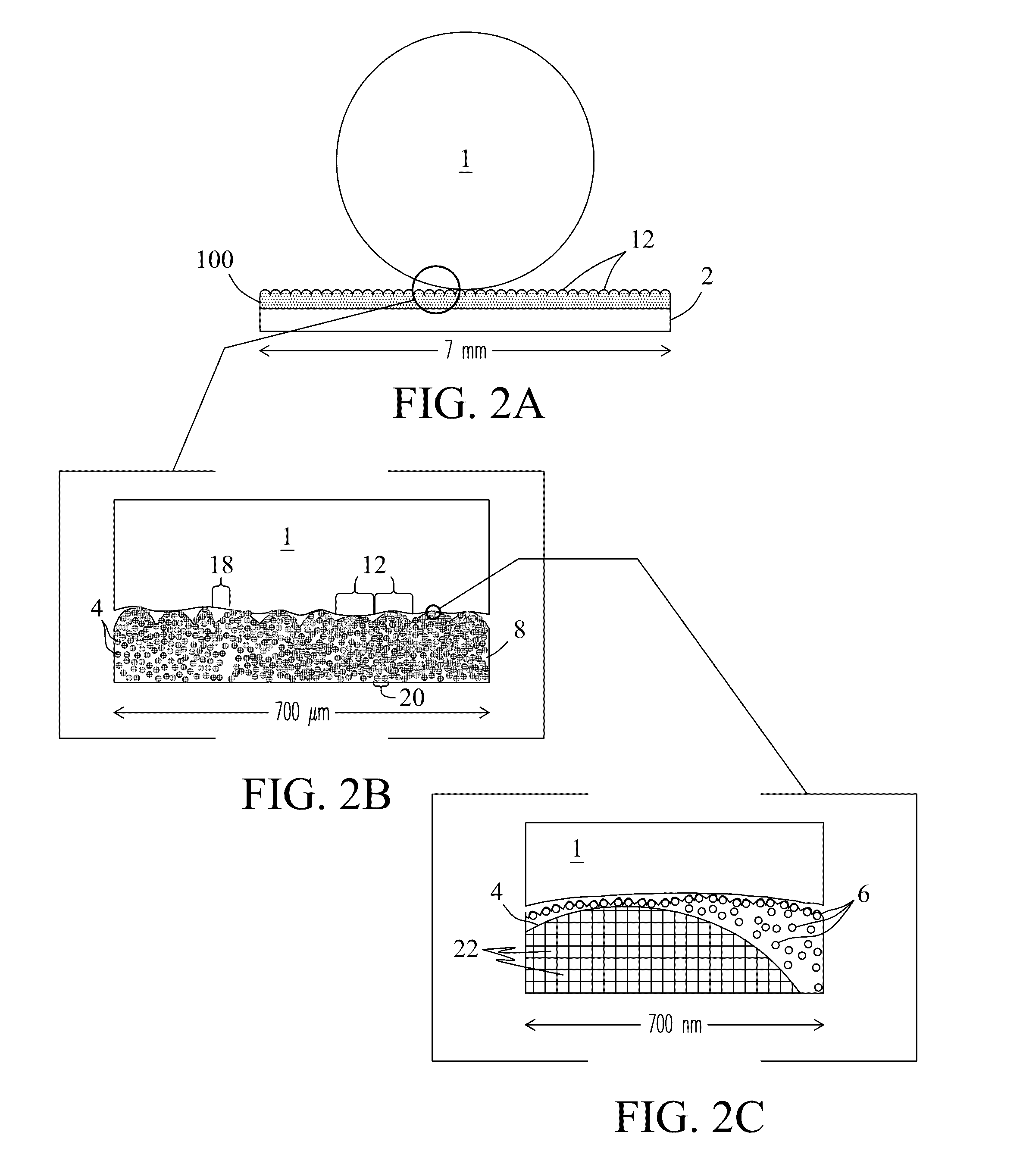Paintable hydrophobic and lubricant-infused surface coatings and processes for making and using same
a technology of hydrophobic and lubricant, applied in the direction of liquid surface applicators, coatings, special surfaces, etc., can solve the problems of environmental and human health, carbon emissions, machine performance, and environmental pollution, and achieve the effects of enhancing surface properties, reducing surface friction of the coated surface, and increasing porosity of the lis coating
- Summary
- Abstract
- Description
- Claims
- Application Information
AI Technical Summary
Benefits of technology
Problems solved by technology
Method used
Image
Examples
example 1
Sprayable Hydrophobic Coating
[0112]An exemplary hydrophobic coating composition was prepared. The composition included: mesoporous silica (MCM-41, Sigma Aldrich, USA), fumed silica (e.g., CAB-O-SIL® H-5, Cabot Corp., Boston, Mass., USA), polydimethylsiloxane (PDMS) polymer (e.g., Sylgard 184, Dow Corning, USA) mixed in hexane solvent (Sigma-Aldrich, USA). Mesoporous silica particles were ball milled to a diameter ranging from about 1 μm to about 3 μm, rinsed with isopropanol, and dried. CAB-O-SIL® H-5 particles were of a size between about 20 nm to about 30 nm that form chain-like aggregates with an approximate length of 100 nm to 300 nm. Hexane lowers viscosity of the composition and delays polymerization of the PDMS until the hydrophobic coating composition is applied to the receiving surface.
[0113]In an exemplary composition, 0.3 g mesoporous silica (first particulate material), 0.6 g fumed silica (second particulate material), 1.6 g PDMS (matrix polymer), and 25 g of hexane (dis...
example 2
Formation of LIS Coatings by Application of Lubricants
[0114]Various lubricants were applied to hydrophobic coatings of EXAMPLE 1 and to other hydrophobic coatings of similar composition to form LIS coatings. Viscosity of the lubricants was modified as needed to allow spraying, painting, or air-brushing of the lubricants. In some applications, lubricants were mixed with suitable or volatile organic solvents such as isopropanol or perfluorohexane solvent in a 1:10 weight ratio to provide a selected or preferred viscosity for application. In some applications, lubricant viscosities were also selected by heating the lubricant, for example, to temperatures between about 60° C. to about 70° C. prior to application. Lubricant was dispensed to the textured surface of the hydrophobic coating and allowed to infuse (permeate) the hydrophobic coating. The coating became more transparent following infusion with lubricant. Infusion of the hydrophobic coated surface was achieved in a typical time ...
example 3
Anti-Fouling and Self-Healing Tests of SHP- and LIS-Coated Surfaces with Selected Liquids
[0121]Hydrophobic (e.g., SHP) and LIS coated surfaces were subjected to multiple adhesive and fouling materials and media including, for example, honey, biomedical bacteria (Pseudomonas putida), marine seawater (EXAMPLE 5), and other fouling media. Drops of honey and a stained biomedical bacteria solution were placed in individual tests near the top edge of uncoated (column 1), SHP-coated (column 2), and LIS-coated (column 3) glass slides. Slides were inclined at an angle of ˜75 degrees for honey and 15 degrees for bacteria to observe motion of the liquids over each surface. SHP and LIS coated samples each had an uncoated zone and a zone deliberately scratched with a razor blade to assess the self-healing properties of the LIS coating. FIG. 10A shows that honey adhered to and moved slowly over the uncoated glass slide, which had the highest surface energy. In the second column, honey moved rapid...
PUM
| Property | Measurement | Unit |
|---|---|---|
| surface energy | aaaaa | aaaaa |
| surface energy | aaaaa | aaaaa |
| water roll-off angle | aaaaa | aaaaa |
Abstract
Description
Claims
Application Information
 Login to View More
Login to View More - R&D
- Intellectual Property
- Life Sciences
- Materials
- Tech Scout
- Unparalleled Data Quality
- Higher Quality Content
- 60% Fewer Hallucinations
Browse by: Latest US Patents, China's latest patents, Technical Efficacy Thesaurus, Application Domain, Technology Topic, Popular Technical Reports.
© 2025 PatSnap. All rights reserved.Legal|Privacy policy|Modern Slavery Act Transparency Statement|Sitemap|About US| Contact US: help@patsnap.com



